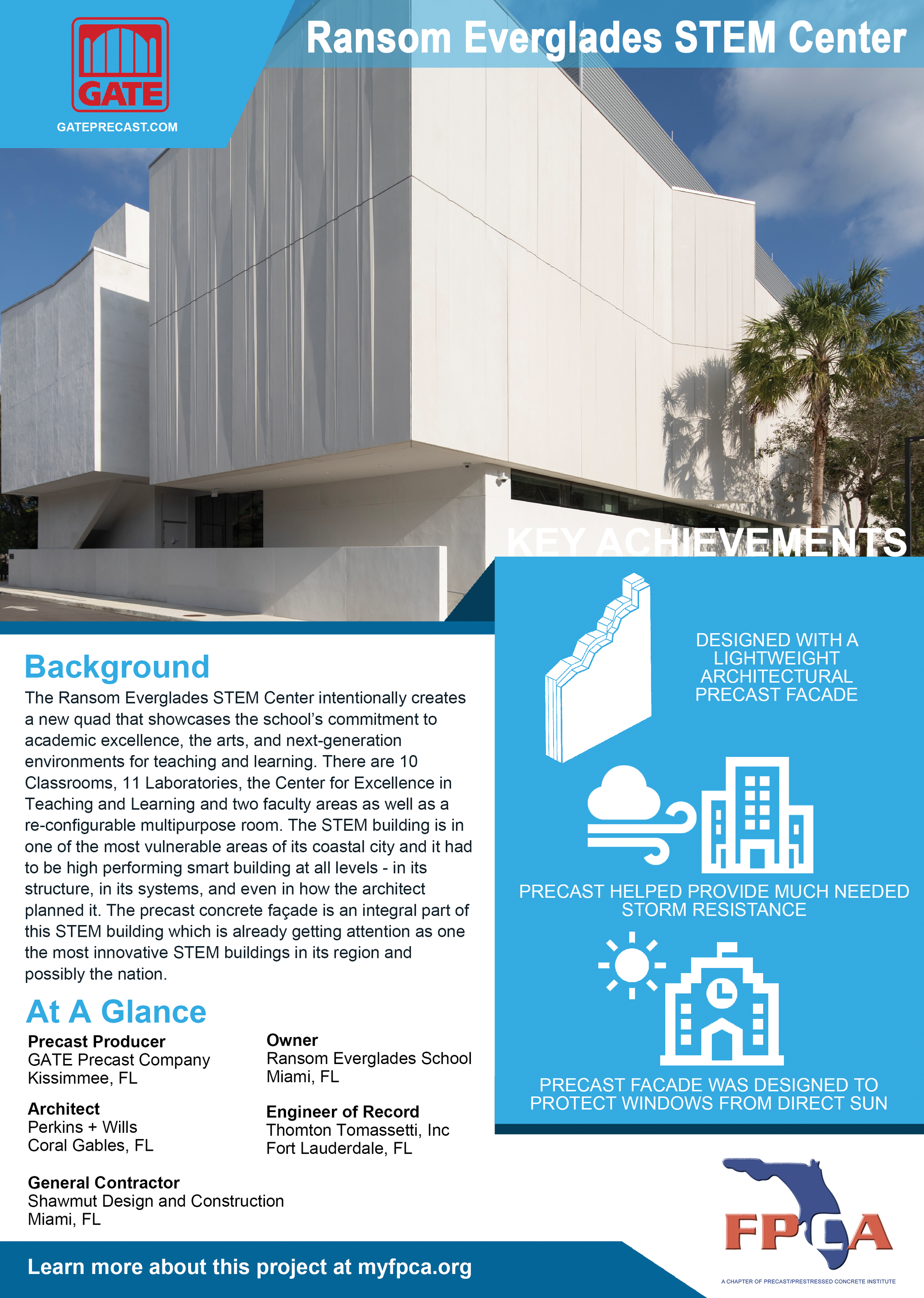Background
The new STEM Center is located at the entrance of a historic Campus. Its location intentionally creates a new quad that showcases the school’s commitment to academic excellence, the arts, and next-generation environments for teaching and learning. The quad introduces four distinct zones that frame the main pedestrian entry into the heart of the campus through the historic Cameron hall breezeway. These zones create an outdoor theater, an art exhibition center, an outdoor classroom and a student green. The outdoor and indoor learning environments enhance opportunities for informal learning and student life.
Understanding the principles of STEM education, the school envisioned a 45,000 SF Center for Science and Math that allows for a multidisciplinary approach to education for both faculty and students. The project’s collaboration areas enhance team-based learning and promote an environment of thought leadership, experimentation, and creativity.
Flexibility and adaptability, from moving walls to movable furniture and services, make this facility one of the leading STEM high school centers in the country and showcases a forward-thinking faculty and award-winning student body.
Technology throughout the facility allows for local, national and international connectivity and enables students to remain informed of the building’s performance, featured projects, class activities, and general information.
Transparency not only allows for passive security best practices, it also enhances a day-lit environment creating awareness of the activities inside and outside of the classrooms, and provides an opportunity to showcase learning and the ever-present cinematic activity within the building.
There are 10 Classrooms, 11 Laboratories, the Center for Excellence in Teaching and Learning and two faculty areas as well as a re-configurable multipurpose room for approximately 200 that will enable the school to host lectures, exhibitions, art installations, and robotic competitions. The Roof Level has an outdoor laboratory designed for modular agriculture. The majority of the roof surface hosts photovoltaic panels, contributing to the pursuit of the USGBC’s LEED® Silver or Gold level of certification.
Precast was chosen because the owner and designer wanted to create a responsible building that is as intelligent as the students, the activates and the faculty it will house. The precaster and designer created a lightweight building envelope solution that not only reflects the core mission statement of school but provides forward-thinking construction prefabrication methods.
The STEM building is in one of the most vulnerable areas of its coastal city and it had to be high performing smart building at all levels – in its structure, in its systems, and even in how the architect planned it. The precast concrete façade is an integral part of this STEM building which is already getting attention as one the most innovative STEM buildings in its region and possibly the nation.
Design Challenges
Sculptural within delicate form The location of the school, which is on Biscayne Bay and next to historic nature played a significant role in decisions the architect was making early on. The desire to create a responsible building that is as intelligent as the students, the activites and the faculty it will house began the discussions with the precaster about a lightweight building envelope solution. This precaster offered a responsible system from a carbon footprint, from a manufacturing perspective, from a tectonic point of view, and in the sense of using less material.
The precaster was challenged with creating a façade system that not only was lightweight but sculptural within a delicate form. The façade’s embossed type of textures was developed through a collaboration with the designer. The precaster turned the architect’s vision into reality yielding the level of nuances to the panels they desired. The result is a subtle, delicate pavilion that is nestled in its environment. The nuances on the panels allow you to have a sense movement as you walk around the building.
The Engineer-of-Record designed this building in a post-tension system to reduce the slab thickness and eliminate the heavy edge perimeter beams. The primary design challenge: • Provide a facade system that imposes no more than 48psf dead load (self-weight). The precaster’s lightweight system provided less than 48 and actually 38 psf. • Serve as a rain barrier • Conveys the three-dimensional architectural surface articulation • Must withstand the rigorous hurricane winds and missile impact testing required for South Florida building codes
Another challenge is façade dead loads (gravity loads) are only allowed on roof level to meet the budget on building structure. In order to provide a solution for those challenges, the precaster developed a composite lightweight architectural precast panel, a composite tube steel engineered framing system with 2 – 2.5” inch mesh only reinforced concrete skin
(galvanized pins to connect the skin to the tube frame).
Imposing only 38psf overall dead load, the lightweight system meets and exceeds the stringent engineering challenge imposed by the design team. Moreover, the lightweight system maintains the same design intent and characteristics admired by the architect.
To meet the dead loads on roof level only challenge, each panel was sized about 33 ft tall by 12 ft width. With the 48 psf weight cap, 5’’ deep light gauge (1/4” wall thickness) tube steel frame was used. To balance the overall weight and the stiffness of the panels, finite element analysis (FEA) was used to further understand the engineering performance of this system on serviceability, handling, shipping, and fabrication.
Innovations/Accomplishments
The lightweight system used on this South Florida school represents an important engineering stepping stone for prefabricated facade systems where design and cost can share a common ground; where the system contributes to the same forward-thinking spirit this institution prides itself on.
On a lightweight architectural precast panel system, a steel frame provides the structure that supports the weight of the non-structural concrete skin. Anchors pins embedded in the concrete skin transfer the weight of the skin back to the frame and the frame is connected to the building structure at discrete points. The connection design is the same as traditional precast, except that instead of a panel embed, steel hardware is welded to the frame. The frame on the back greatly reduced the field remedial cases due to the continued framing can be utilized. The frame were rigidly designed but the pin provides enough flexibility to allow concrete skin to breath.
Self Shading: The building design incorporates self-shading elements. The designed sculptured the façade to include vertical openings or “eyelids” to the bay. The aperture was calculated so the building would always get the light, but never let the sun directly come in. The view remained giving the students peekaboo moments of looking at the bay. The precast becomes a protected armor to the window that recesses in.
Photos via GATE Precast Company
RANSOM EVERGLADES STEM CENTER
Location:
Ransom Everglades School
Miami, FL
Schedule:
Project Start: 03/2019
Precast Erection Start: 04/26/19
Precast Erection Completion: 09/9/19
Project Completion: 07/2021
Cost:
Total Precast Cost: $7.3 million
Square Footage: 45,000 SF
Involved Companies
Precast Concrete Producer
GATE Precast Company
810 Sawdust Trail
Kissimmee, FL 34744
gateprecast.com
Precast Specialty Engineer
GATE Precast Company
810 Sawdust Trail
Kissimmee, FL 34744
gateprecast.com
PCI Certified Erector
Precast Erectors, Inc
3500 Valley Vista Drive
Hurst, TX 76053
precasterectors.com











